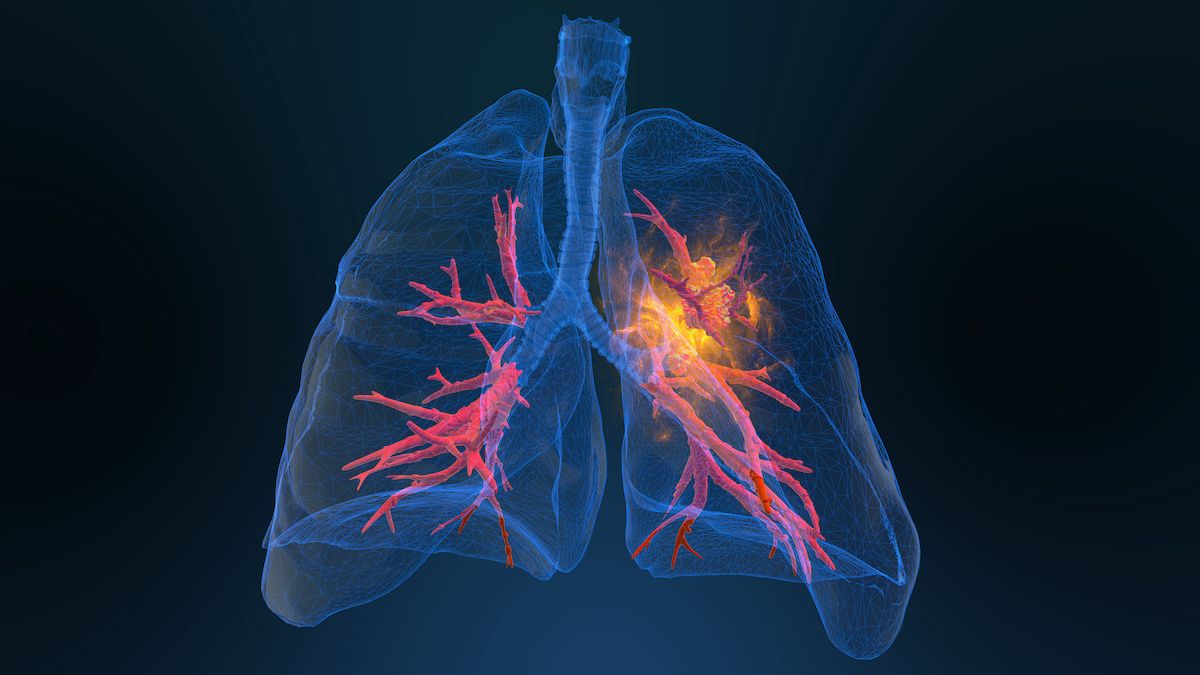- Center on Health Equity & Access
- Clinical
- Health Care Cost
- Health Care Delivery
- Insurance
- Policy
- Technology
- Value-Based Care
Cachexia Worsens Prognosis in Older Patients With Advanced SCLC
Older patients with small cell lung cancer and significant weight loss were more likely to experience dose interruptions than patients with cachexia.
Older patients with advanced small cell lung cancer (SCLC) face inferior survival if they also have cachexia, according to a new report. The study, which was published in Thoracic Cancer, adds to a growing body of evidence regarding the negative impacts of cachexia on patient outcomes.1
Previous research has already shown how cachexia negatively affects the prognosis of patients with other types of cancer, including non-small cell lung cancer (NSCLC). In addition, a registry-based study from 2023 analyzing Japanese lung cancer patients suggested patients with cachexia have a one-year survival rate of just 37.6%, compared with 60.7% among patients without cachexia.2 That study found approximately 1 in 5 patients with lung cancer experienced cachexia. However, the large majority of patients in that study were under the age of 75, and about 80% had NSCLC.
The investigators found that patients with SCLC and cachexia were more likely to have problems with treatment. | Image credit: appledesign - stock.adobe.com

In the new study, the authors wanted to better understand how cachexia affects patients with advanced SCLC specifically.1 They also focused on older patients—those aged 70 and above—and they limited their analysis to patients receiving first-line carboplatin (CBDCA) and etoposide (ETP).
“Narrowing down the tumor type, age group, and treatment regimen would allow for a more accurate analysis and better understanding of the effect of cachexia in specific carcinomas,” they explained.
The investigators pulled records of patients who were treated at the Shizuoka Cancer Center in Japan between January 2015 and June 2020 who met the inclusion criteria. Patients were considered to have cachexia if they had lost 5% or more of their weight in the 6 months prior to beginning therapy, or if they had a body mass index of 20 or below and a weight loss of 2% or more.
Altogether, the authors identified 49 patients who met the inclusion criteria. Of those, 28 (57%) met the criteria for cachexia. The investigators found that patients with cachexia were more likely to have problems with treatment. For instance, 46% of patients with cachexia had dose reductions, compared with just 10% for those without cachexia (P < .05). Similarly, just 61% of patients with cachexia completed 4 courses of chemotherapy, compared with 90% of patients without cachexia (P < .05).
“Although the decision to reduce the dose or administer prophylactic pegfilgrastim was left to the discretion of each attending physician, these findings suggest that patients with cachexia may have been more vulnerable to chemotherapy toxicity, leading to a higher rate of dose reduction,” the authors wrote.
Patients with cachexia also experienced worse outcomes following treatment. The median progression-free survival for patients with cachexia was 3.3 months, compared with 5.4 months in the non-cachexia group. Overall survival was 6.3 months for patients with cachexia, compared with 15.1 months in patients without cachexia.
“Although CBDCA + ETP therapy for SCLC has been reported to be highly effective, with response rates as high as 57% even in older patients and performance status 3, the presence of pretreatment cachexia may have contributed to inadequate treatment delivery and poor prognosis,” the authors noted.3
The study was limited by the single-center design of the trial, the small number of patients, and the specificity of the population. In addition, the authors noted that 58 patients who otherwise met inclusion criteria had to be excluded from the trial because there were insufficient data about their weight changes—an omission that could have affected the study’s results. Still, they concluded that the study clearly showed that patients with cachexia are more likely to have treatment interruptions and dose reductions and are less likely to undergo second-line therapy.
“These low treatment deliveries, possibly because of their vulnerabilities, may have affected treatment efficacy,” they concluded.
References
- Yabe M, Naito T, Matsuda S, et al. Effect of cancer cachexia on the efficacy and treatment delivery of chemotherapy in older patients with advanced small cell lung cancer. Thorac Cancer. 2025;16(12):e70104. doi:10.1111/1759-7714.70104
- Shukuya T, Takahashi K, Shintani Y, et al. Epidemiology, risk factors and impact of cachexia on patient outcome: results from the Japanese Lung Cancer Registry Study. J Cachexia Sarcopenia Muscle. 2023;14(3):1274-1285. doi:10.1002/jcsm.13216
- Okamoto H, Watanabe K, Kunikane H, et al. Randomised phase III trial of carboplatin plus etoposide vs split doses of cisplatin plus etoposide in elderly or poor-risk patients with extensive disease small-cell lung cancer: JCOG 9702. Br J Cancer. 2007;97(2):162-169. doi:10.1038/sj.bjc.6603810
